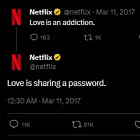Why No One’s Paying for Ghibli AI?
Everyone loved the dreamy, animated look. But when they saw the $20 price tag, they bounced. So… what went wrong?
Hey hey,
Another week, another viral feature with a tricky tradeoff.
Last week, we saw how Netflix stopped people from sharing passwords.
This week, we are jumping into something very different - Ghibli-style AI images.
Everyone Wants Ghibli AI Selfies, But Few Pay
Studio Ghibli-style AI images are all over X, Reddit, and Instagram right now.
People are uploading selfies to ChatGPT and asking it to turn them into stunning, animated movie posters using the new GPT-4o model.
It blew up online, and everyone wanted to try it.
However, this feature isn't available for everyone. And that’s where users are drawing the line. They love the results but not enough to upgrade to the paid tier.
So, other platforms are offering the same features for free.
And people are jumping to use them.
Here’s What We Know
The tool is only available on ChatGPT’s $20/month paid plan.
Apps like ToonMe and others now offer similar tools at no cost.
Ghibli’s co-founder, Hayao Miyazaki, has called AI art “an insult to life itself.”
Think Like A PM
The feature went viral, but users didn’t want to pay. How would you fix that?
If you were in charge, would you paywall the feature or give it to free users, too?
How do you decide what’s fair when using another artist’s style in your product?
Drop your thoughts in the comments — the best replies get featured next week!
Thoughts From The JAPM Team
Last week we spoke Netflix’s crackdown on password sharing, and here are our thoughts on that.
The new move isn’t just about stopping freeloaders. It’s about protecting future revenue. Growth is slowing. Competition is rising.
And Netflix needs more paying users now, not later.
But strict rules come with risks. Push too hard, and you lose loyal users. Go soft, and nothing changes. The trick is to drive conversions without breaking trust.
Instead of hard blocks, Netflix could have tried:
A low-cost “shared account” plan
Smart limits (e.g., 2 out-of-home streams per month)
Usage-based nudges before blocking
The group watch pricing or roommate bundles
It's about charging for value without killing the vibe.
See you in the comments.
—Sid







The feature went viral, but users didn’t want to pay. How would you fix that?
I’d let people try it at least once for free. Maybe limit the resolution, but give them something to share. That way you’re still riding the wave of virality, and then you can prompt them to upgrade when they’re already emotionally invested. Asking people to pay before they’ve even seen the result is a tough sell.
Would you paywall the feature or give it to free users too?
I wouldn’t fully lock it behind a paywall. It’s a fun, shareable feature perfect for top-of-funnel. Let people use it in a limited way, and make the paid version about unlocking more styles, better quality, etc.
How do you decide what’s fair when using another artist’s style?
If you’re clearly mimicking a well-known style like Ghibli, I think there’s a line. Even if it’s AI-generated, people know where that inspiration comes from. I’d lean toward transparency, either call it “inspired by” or give credit where it’s due. Long-term, the respectful approach builds more trust with users and the creative community.
1. The feature went viral, but users didn’t want to pay. How would you fix that?
I’d let users access the feature in a limited way and give them something meaningful to experience. That emotional connection can drive virality and create a natural path to upgrade. If you ask people to pay before they’ve seen any results, you risk losing potential customers—or even sending them straight to a competitor.
2. If you were in charge, would you paywall the feature or give it to free users, too?
No, I wouldn’t put the feature behind a full paywall. Free users should be able to access it in a limited way. I’d focus on making the experience more intuitive, higher quality, and visually appealing—so that users naturally feel encouraged to upgrade to the paid version.
3. How do you decide what’s fair when using another artist’s style in your product?
When it comes to using another artist’s style in your product, the fairest and most respectful approach is to partner or collaborate directly with the artist. Even if the style is AI-generated, people recognize the source of inspiration. Collaborating not only gives proper credit but also builds long-term trust with users and the creative community.